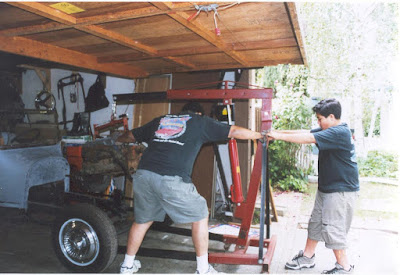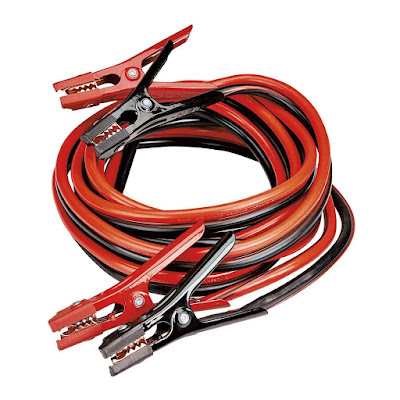How the Mighty have fallen!
 |
| photo source: wilkipedia Titans of the past. |
The cruelest of phrases, either said with smug satisfaction or merely relating the current situation.
It is, of course, the story that is the oldest in human history.
One that reverberates with us because we experience that same reality within our own lives.
Where it is played out on a lesser, but no less dramatic scale.
In the Great World, Empires fall, Kingdoms are usurped and great Nations wither.
But in our reality, our personal history it is the only one that really matters.
Our ascendance into maturity, the plateau of adulthood, and then the long steady decline.
The end times punctuated with wistful remembrance.
What does all that flowery language have to do with old cars? That's a good question. I thought that I'd just take the opportunity to get all lyrical. Trying the satisfy my writer's itch.There is something that as car enthusiasts we do have to watch out for. If it doesn't happen to us directly, we are surely exposed to it by our peers. That's the phenomenon of "The Next Big Thing."
Moving on, moving forward, leaving the old in the dust. Nowhere was this better manifested then in the Car Buff magazines that we all read for years. Hero to Zero, just like Hercules in the Disney animated movie.
 |
| Scene from the movie. "One day you're on top of the World, then..." |
How can they rave about a car this year, and then next year it's a pig? They didn't "notice" any terrible problems or shortcomings until the arrival of next year's model!
Well, they traffic in hyperbole. Their job is not just to raise our enthusiasm, it's also to encourage our hunger for the new, and our dissatisfaction with the old. After all, there are new cars to sell.
Sure, there is real progress made every year, or at least it looks that way.
There is a constant bombardment of our senses, exposed every day to the new, the now, the trending. We tend to forget that our own lives are more deeply rooted in existing relationships and commitments. The echoes of choices that we made in the past.
 |
| Certainly not a Zero today. |
Last week I was giving my Daughter a ride home from work. We chanced upon a Datsun 280Z on the expressway ahead of us. It was neat and complete, but could have used a new paint job. It was driven by a young guy who obviously took a lot of pride in his machine. As I passed alongside I gave him a smile and a nod of the head. He smiled back, it was the car guy connection.
This encounter launched me into a soliloquy about the value and experience of owning a vintage car. Note that I said soliloquy, not discussion. My Daughter is not a car person and it didn't take long for her eyes to roll back and glaze over! But since she was a captive audience, I continued on.
I started talking about the progression, how cars just kept getting better through the 30's 40's and 50's. All the way through the 1960's. The rise of the muscle car. Then something happened. The upward curve of evolution hit an imposed ceiling. That of reduced emissions and increased need for improved fuel economy.
Because of this, the older models that preceded them were seen as so much more capable and desirable. Objectively, the new cars couldn't hold a candle to the late 60's machines. This bathed those earlier cars in a special light.
 |
| Those headlights were the light at the end of a very dark tunnel. |
This situation with new cars lasted well in the 1980's. Think about when the new 1988 Mustang GT was launched. "The Boss is back!"
It certainly was. The trend continued with the newest versions of the Mustang improving every year.
 |
| The fabled Boss 302 was reborn, better than ever. |
Back to the point. The new can distract us, and make us dissatisfied with the things that have pleased and satisfied us in the past.
The value that was there, is still there.
We have to realize that we have to reconcile the past with the present, and with the future.
We have to do that every time we look in the mirror. That person staring back at us, is still "us" but not the "us" that we knew from our past. A version improved through learning and experience. Our appearance may be grizzled, our performance might now be diminished, but the records of our achievement remain intact.
The cars that we cherish still maintain the qualities that attracted us to them in the past. That's probably the key to happiness as an automotive enthusiast. We have to value what they were, and to accept the inevitable progress that is taking place. This will only diminish the warmth of our memories if we allow it to.
In other words, it's a conscious decision that we have to make.
There is a large faction in the Model T community that build Speedsters. Obviously they are not going to be very fast, but I'll bet that they are going to be very fun!
 |
| The Honda CB160. I'll never be 16 again. |
I remember the thrill of riding my Honda CB 160 motorcycle, my first "real" motorcycle. It had a 16 horsepower twin cylinder motor, was freeway legal, and could achieve a top speed of 70 mph. But more importantly, it was powerful enough to easily climb the Oakland foothills behind my neighborhood. That opened up the freedom to explore all the back roads in the area. I can still remember the feeling of exhilaration, freedom, and joy. I'll never be that 16 year old kid again, but just the memories alone are enough.
That 1988 Mustang GT for example. It was, and still is, what it always was. It will never be a four cylinder LX model, or a Hyundai Tiburon, or anything else like that. Just like we are, who we have always been. Older, a bit worn down by life, but with our own personal records of achievement.
I was once standing around at work with a few of my fellow old timers talking about the Good Old Days. One of the new kids was shaking his head and silently laughing a bit. "You think that we are just a bunch of has-beens, don't you? But it's better to be a has been, then a never was. You kids aren't "even there" yet, but you will be, if you're lucky."
We've all heard the phrase, "Drive it like you stole it!" Which means to drive it and use it, as it was built to be used. Without all the worry and concern that you are using it up.
For 2021, I want to coin a new catch phrase."Drive it like you love it!"
Let's drive the cars that we currently have and see if we can rediscover the qualities that attracted them to us in the past. If we are lucky enough to survive these trying times, and hold onto some of the things that we cherish, let's be grateful and thankful.
On that note I want to wish everyone that reads my blog a Happy New Year. I appreciate your support of my writing efforts. I hope that I have provided a few minutes of enjoyment in your day. I sincerely hope that 2021 will bring us all better days.


































